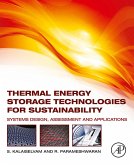Geological storage and sequestration of carbon dioxide, in saline aquifers, depleted oil and gas fields or unminable coal seams, represents one of the most important processes for reducing humankind's emissions of greenhouse gases. Geological storage of carbon dioxide (CO2) reviews the techniques and wider implications of carbon dioxide capture and storage (CCS).Part one provides an overview of the fundamentals of the geological storage of CO2. Chapters discuss anthropogenic climate change and the role of CCS, the modelling of storage capacity, injectivity, migration and trapping of CO2, the monitoring of geological storage of CO2, and the role of pressure in CCS. Chapters in part two move on to explore the environmental, social and regulatory aspects of CCS including CO2 leakage from geological storage facilities, risk assessment of CO2 storage complexes and public engagement in projects, and the legal framework for CCS. Finally, part three focuses on a variety of different projects and includes case studies of offshore CO2 storage at Sleipner natural gas field beneath the North Sea, the CO2CRC Otway Project in Australia, on-shore CO2 storage at the Ketzin pilot site in Germany, and the K12-B CO2 injection project in the Netherlands.Geological storage of carbon dioxide (CO2) is a comprehensive resource for geoscientists and geotechnical engineers and academics and researches interested in the field. - Reviews the techniques and wider implications of carbon dioxide capture and storage (CCS) - An overview of the fundamentals of the geological storage of CO2 discussing the modelling of storage capacity, injectivity, migration and trapping of CO2 among other subjects - Explores the environmental, social and regulatory aspects of CCS including CO2 leakage from geological storage facilities, risk assessment of CO2 storage complexes and the legal framework for CCS
Dieser Download kann aus rechtlichen Gründen nur mit Rechnungsadresse in A, B, BG, CY, CZ, D, DK, EW, E, FIN, F, GR, HR, H, IRL, I, LT, L, LR, M, NL, PL, P, R, S, SLO, SK ausgeliefert werden.









